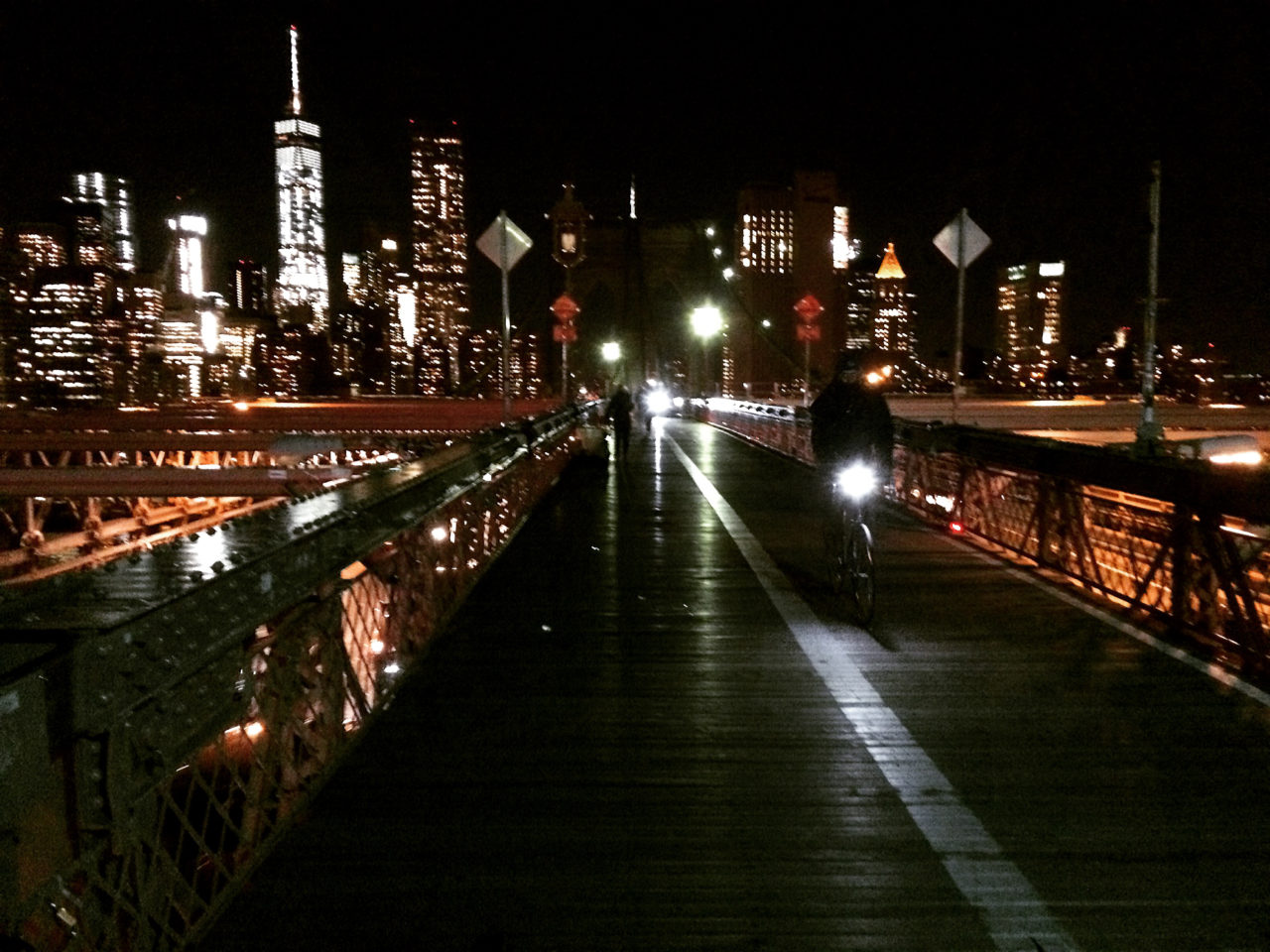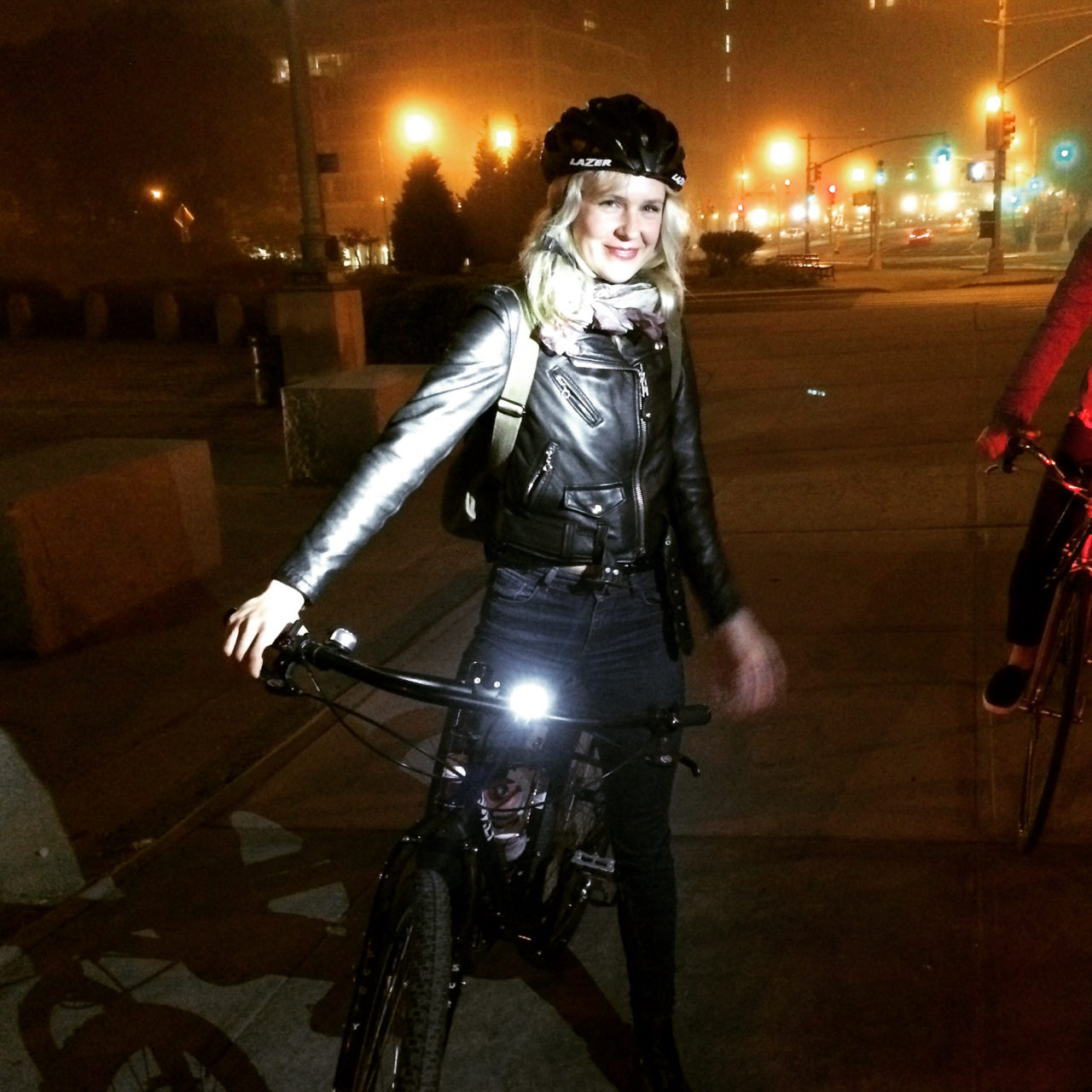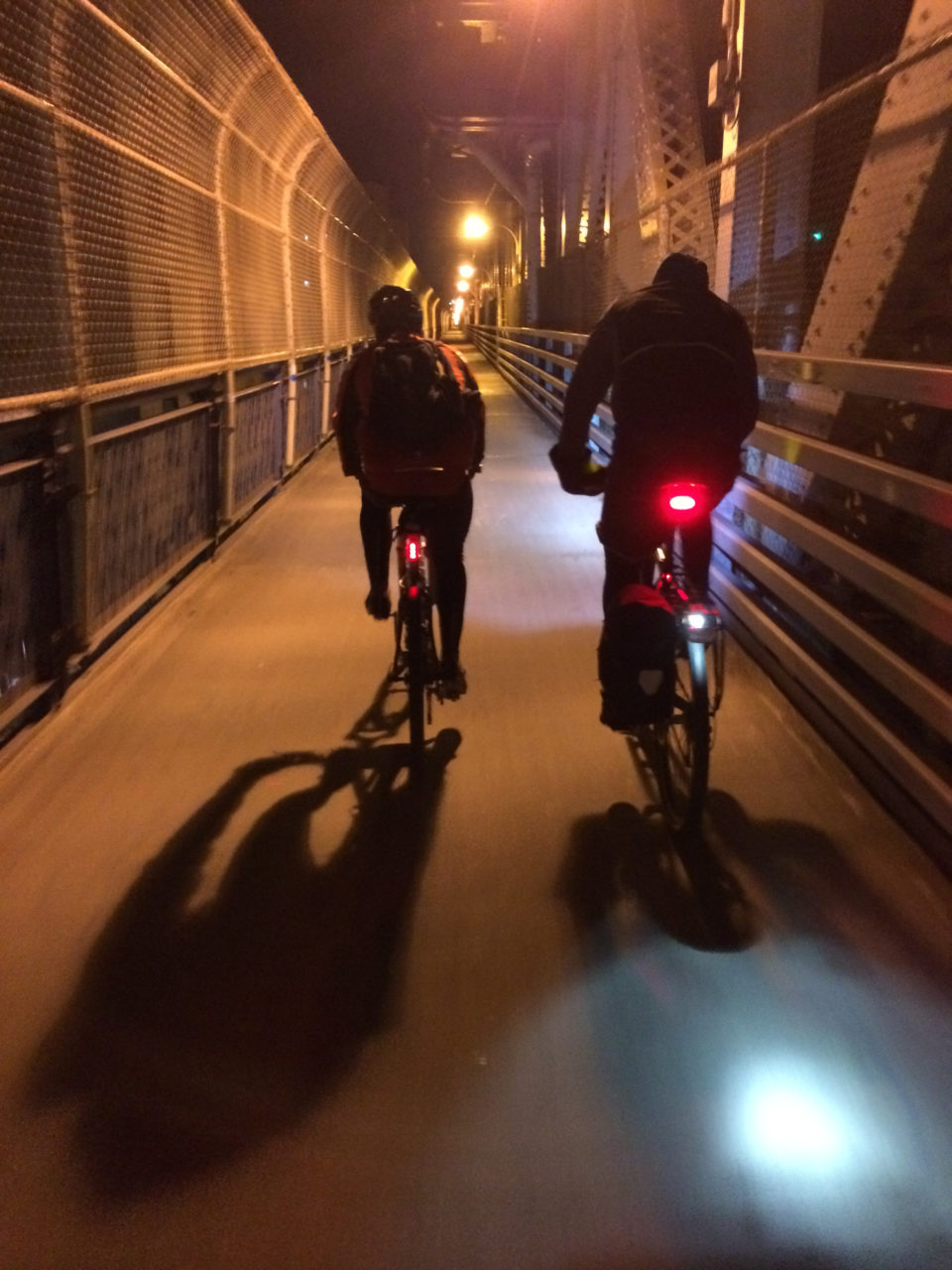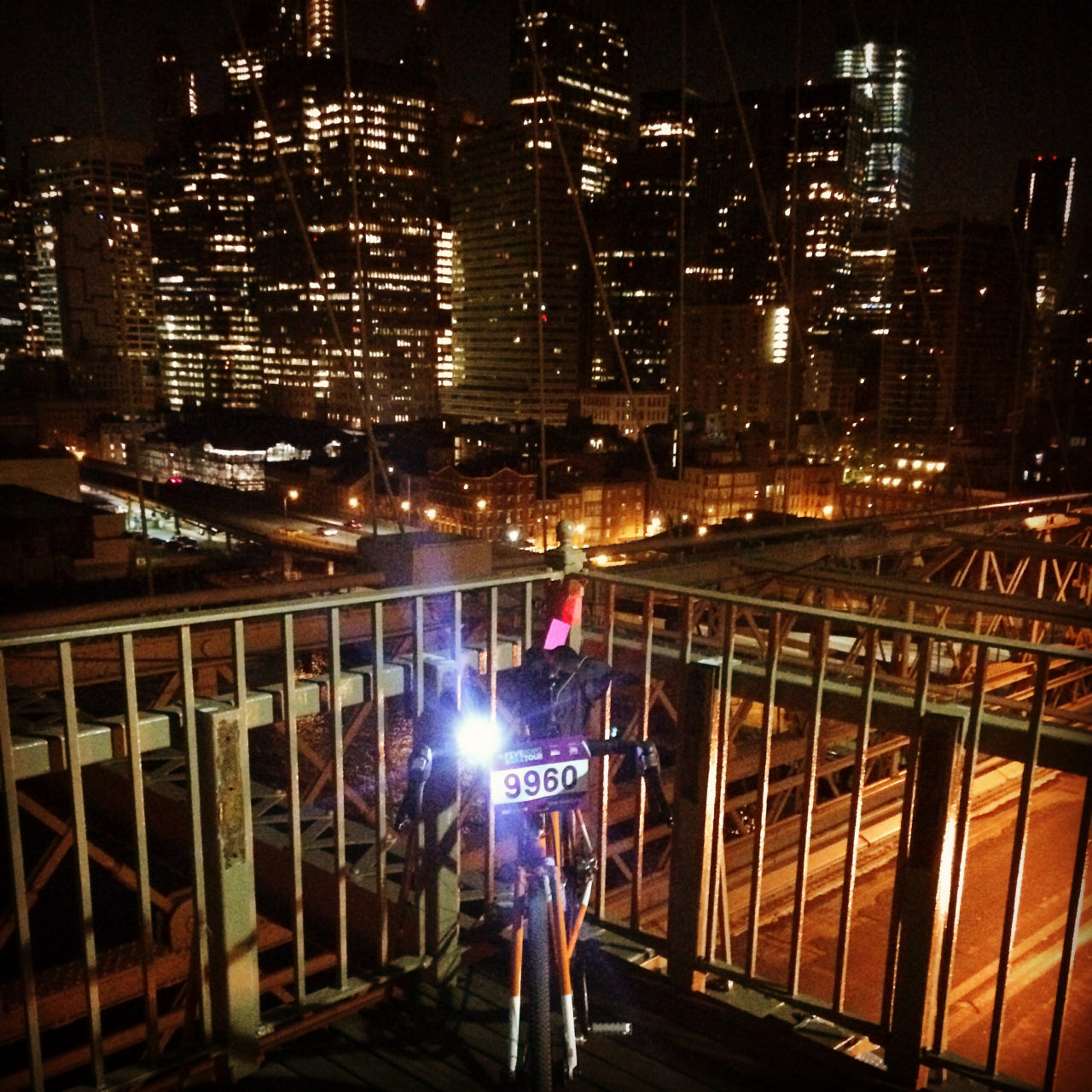October 27, 2016
Bright Lights, Big City: A Guide to Biking at Night

In case you haven’t noticed, the days are getting shorter as we begin our steady seasonal spiral into winter—which means you may face some low-light riding for at least portion of your commute home. (Especially come November 6, when we turn the clocks back an hour.) Bike New York instructor Dan Suraci has some words of wisdom for all you night riders out there.
Light up the night. Conventional wisdom (and the law, and common sense) demands that you strap on a set of bike lights—white in front and red in back. No ifs, ands, or buts.
Blinking is better (most of the time). If your lights have a pulse setting, then use it! There’s an awful lot of ambient light (sometimes referred to as light pollution) in NYC— streets lights, advertisements, buildings, cars—all of which constantly compete for motorists’ attention in the evening. Blinking lights will help draw the eye and keep you on drivers’ radars. If you’re on a separate greenway or path, however, don’t blind your fellow cyclists; take it off the pulse setting and angle it toward the ground.

Ride with the flow of traffic. Aside from the fact that it’s the law, riding the wrong direction at night is especially dangerous because of oncoming headlights. No matter how much ambient lighting there is, oncoming car headlights will force your pupils to dilate, making it exceptionally difficult to perceive details in the surrounding darkness. And, obviously, riding against traffic makes cyclists less visible to drivers at intersections and driveways, as they are unlikely to look in the direction of wrong-way traffic.
Survey your route at least once in the daytime before riding it at night (especially greenways). Even the safest of greenways and protected bike lanes require caution after dark. Some are under-lit while some cyclists find themselves bombarded by oncoming headlights, for example, making it very difficult to see the route ahead. Take the time to survey your typical return route for conditions that might pose a problem at night, and plan accordingly.
Get reflective! It might be dark, but as we’ve said, there’s a whole lot of ambient light bouncing around at night—so put it to good use! The general rule of thumb is to avoid dark clothing in favor of brighter, more florescent colors. If reflectivity is an option, go for it! While a neon green cotton shirt is more visible than black, it’s best to invest in materials and gear with reflective strips designed to take light and throw it straight back toward the source. Here’s a few ideas to get you started:
- Tires with reflective sidewalls
- Reflective frame strips
- Shirts, gloves, helmets and shorts with reflective fridges or patches
Layer up. It might not be time for the full, 3-layer system, but as the temperature begins to drop throughout the fall, you may want to have a light windbreaker, rain jacket or long sleeve shirt for your ride home. You may not need it on your sun-drenched morning ride, but chances are it will get a bit chillier after dark.
Safety in numbers. If you and a few of your Manhattan office colleagues are among the 2.6 million people living in Brooklyn, for instance, then coordinate your rides and bike to the bridges together. The more cyclists on the road, the more visible bikes will be to drivers. You may have to separate on the other side of the East River, but you’ll not only have company for some of your ride, but added protection through the densest rush hour traffic.

Have fun & ride safely! They don’t call it the city that never sleeps for nuthin’! New York is an incredible sight to behold when the sun goes down and twinkling lights take over the cityscape. Get some friends together for a ride through the loop in Central Park or a late-night cruise over the Brooklyn Bridge. You definitely won’t regret it!

About the author: Dan Suraci is a year-round, all-weather bike commuter, and Bike New York instructor. When not in the saddle, Dan is a certified planner, specializing in bicycle transportation, and strategic planning for mass transit agencies. In addition to advocating for bicycle education and programing, he is currently leading the development of national recommended practices for bicycle integration with transit systems for the American Public Transit Association.

